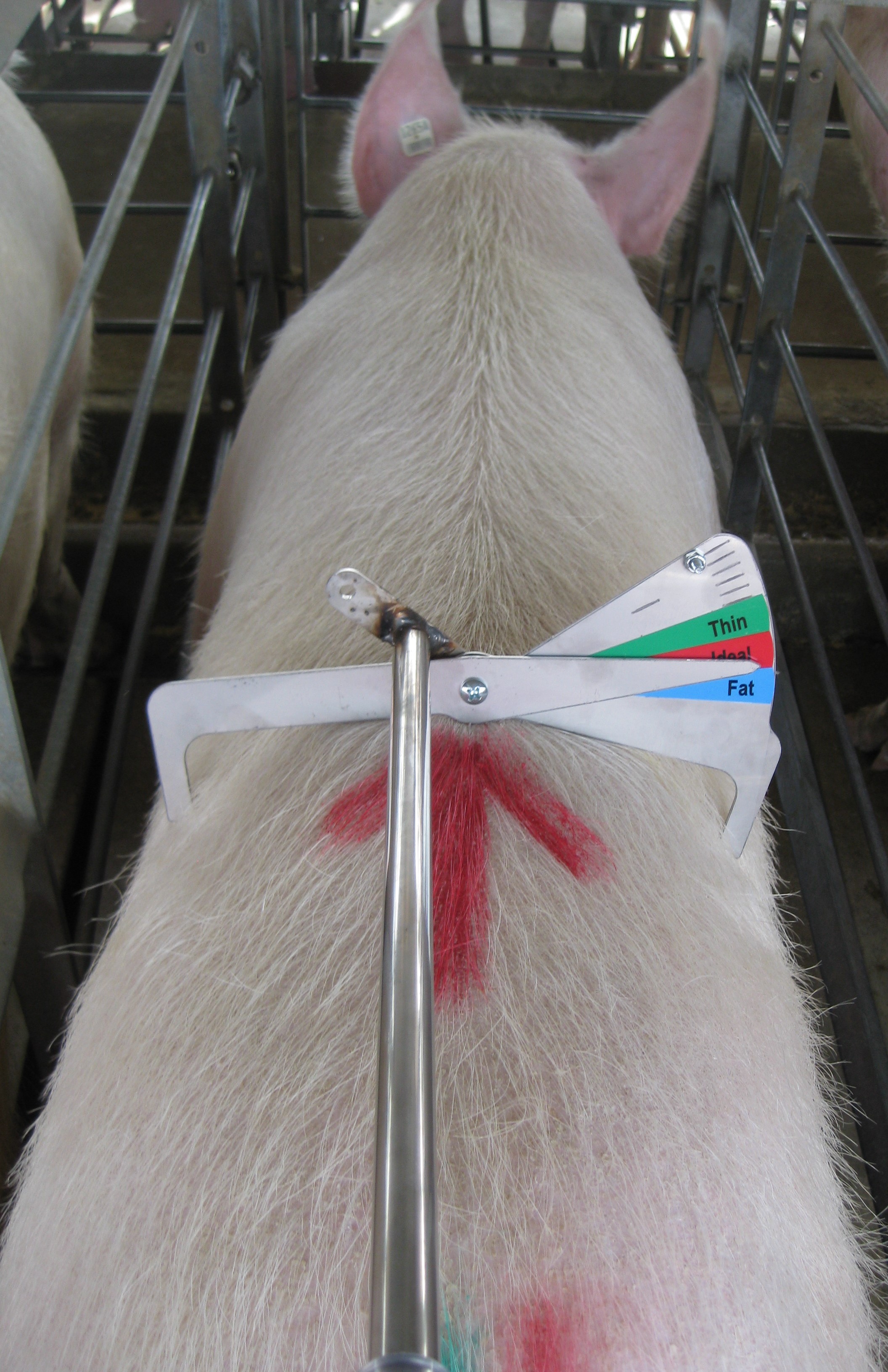Simple Solutions Are Often Best: Sow Caliper 3.0 Provides New Options

Sometimes the simplest solutions are the best. Some producers say the sow caliper is an example of a simple technology solution that has brought great value to their business.
“The art of feeding was taken away and made a science of feeding. That’s what I appreciate the most. We are full-feeding sows in lactation now, so we’re taking all the guesswork out of step feeding. We’ve taken the guesswork out of feeding the sows in gestation because we’ve got to hit a certain body score. It’s brought a discipline to the system and has saved us millions of dollars implementing that simple technology,” Dave Wade of the Hanor Company said during the 2020 Leman Conference.
The sow body condition caliper helps answer an important question facing pig farmers today: Am I overfeeding sows in gestation?
The inventor of this tool, North Carolina State University associate professor and Extension swine specialist Mark Knauer, says he developed the sow caliper to help take the argument out of subjectively scoring sow body condition and ultimately help pig farmers feed sows better.
“Animal well-being and cost are the reasons why it’s so important to feed sows right,” Knauer says. “We don’t want to get sows too thin for animal well-being reasons and they are more likely to go down if they are too thin. On the other hand, fat sows hit us twice. We have increased cost to get her fat, and fat sows have poorer reproductive throughput. If your herd is over-conditioned, you are leaving a lot of money on the table.”
How Does it Work?
“The sow caliper is not really a caliper, and it is not really a protractor, I believe it is a hybrid of the two. Yet we call it a caliper as we thought that might be easier for people to grasp,” Knauer says.
The sow caliper measures the angle of a sow’s back at the last rib. It does not measure width as some agricultural engineers mistakenly reported recently. That’s why it is important to place the center of the sow caliper on the sow’s backbone.
“Sows throughout the world are/were commonly fed to a subjective body condition target,” Knauer says. “Sow herds that were overfeeding females in gestation have been able to reduce feed cost and enhance reproductive throughput. Avoiding thin sows also enhances animal well-being.”
The sow caliper took off, Knauer says, with only word-of-mouth advertisement. To date, the caliper is being used in 36 countries throughout the world and he has spent $0 on advertising. Knauer and his team are producing their third version, finding ways to improve it each time.
What’s New in Version 3.0?
Although the version 1.0 caliper is still used at one of NC State’s research farms, Knauer says they no longer produce that version because the dial on the caliper was too easy to bend, throwing off the measurements slightly. Version 2.0 closely resembles version 1.0, but they made the dial on version 2.0 sturdier and reduced the weight of the version 2.0 by trimming off some of the numbers that are rarely used.
After receiving some feedback that producers were setting the sow caliper on the sow to take the measurement, Knauer says they decided to cut off the handles on version 3.0 if people didn’t need them. Version 3.0 is lighter weight and less expensive to produce, he adds.
But the biggest change to the sow caliper is the 30-inch extension (see below) that producers can put on version 3.0.
“We had noticed some producers were using two handles on the version 2.0 to measure sows. Jerry Purvis and Michael Priest of Purvis Farms came up with the idea to make a single handle for the version 3.0 caliper. After some tweaks to the initial design, and assistance from production manager Dave Majeski, we finalized the design,” Knauer says.
For farms that will be measuring a lot of sows, the version 3.0 sow caliper and 30-inch extension is the best, he says, because it is faster and easier to use. However, if you are just using the sow caliper to measure a few sows to “train” your eye, either version is fine.
“We have not really publicly announced it yet as I was waiting for feedback from the field,” Knauer says. “I have a lot of respect for some of the sow farms in the western part of the U.S. Once they indicated they were trading out the version 2.0 sow calipers for the version 3.0 with the 30-inch extensions, that solidified my view on the value of the 30-inch extensions.”
Evolving Technology
Knauer says his team continues to listen and learn from producers. He has rolled out each version of the sow caliper slowly to make sure he was on top of the education piece and to make sure people were using the tool correctly.
“Communicating instructions for using the sow caliper has improved. We used to just email directions for using the sow caliper. Those instructions did not always make it where they should,” he says. “We now both pack instructions and email instructions.”
As the use of camera technology improves, Knauer expects agricultural engineers to come up with newer and better ways to evaluate body condition score. But for now, the sow caliper is an economical way to take the guesstimate out of determining sow body condition.
“If you are overfeeding sows in gestation, your return on investment for the sow caliper will be off the charts. If you are already doing a good job managing sow body condition score, the sow caliper is an inexpensive way to validate your success and take the argument out of evaluating sow condition,” he says.
Learn how Knauer came up with the idea for the sow caliper.
More from Farm Journal's PORK:
Yes, Sow Body Condition Really Does Matter
Livestock Judging Sparks Idea for Tool That Saves Pig Famers Money








